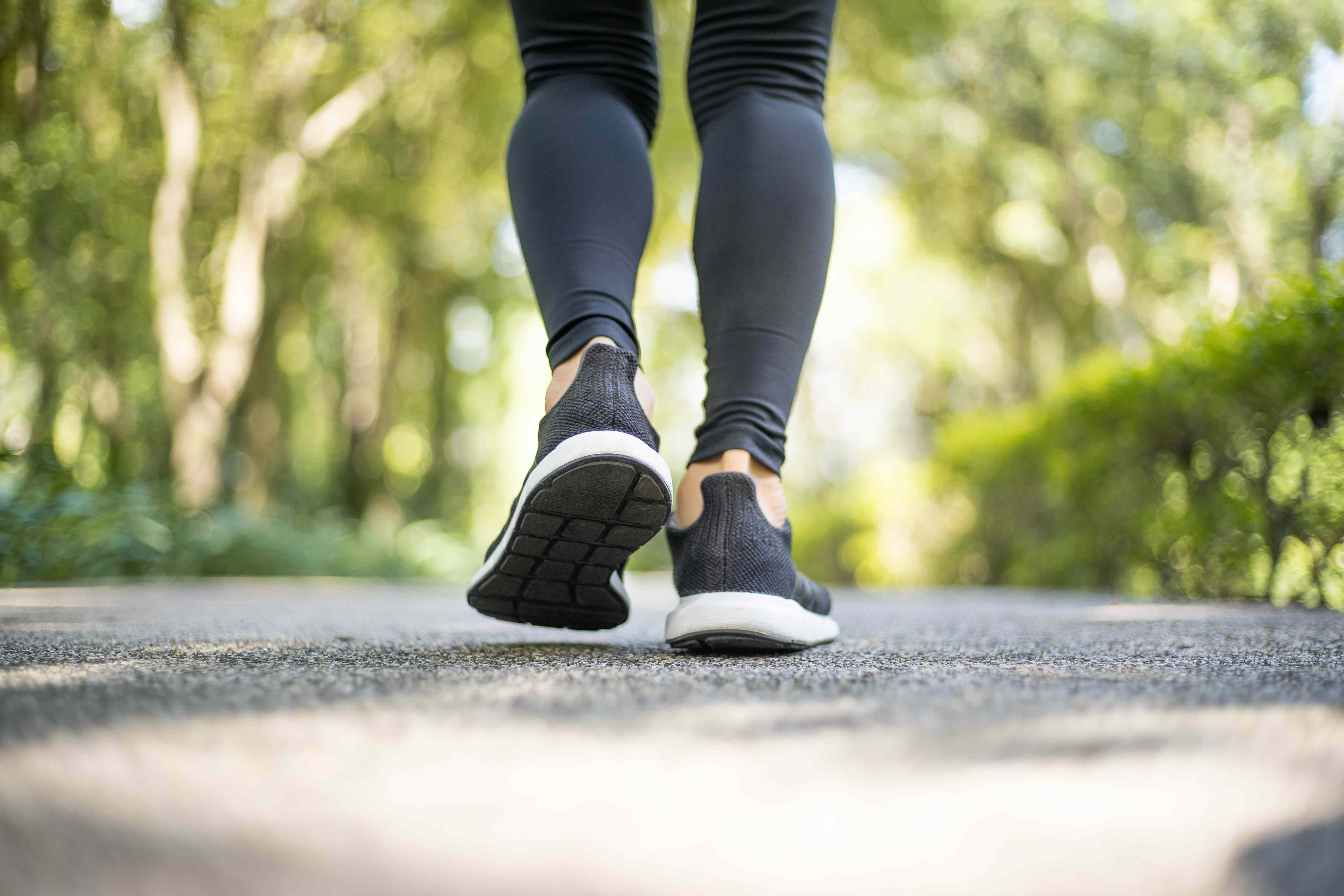Forget 10,000 Steps—'Japanese Walking' Might Yield Even Better Health Benefits Here's how to do it

This trending social media workout may actually improve strength, endurance, and blood pressure more than regular walking

Sorrasak Jar Tinyo / Getty Images
- Japanese walking alternates between fast and slow walking in three-minute intervals.
- Research shows it may improve strength, endurance, and blood pressure more than regular walking.
- Experts say any walking is beneficial, but intervals may boost fitness and break plateaus.
Move over step counting: Many people now point to “Japanese walking,” or interval walking, as their must-do workout routine. The method—which is making the rounds on social media—involves alternating between fast and slow walking for a set period of time.
On TikTok, users say that the strategy can enhance mood, endurance, brain health, and more. One creator even claims that it’s better for you than simply walking 10,000 steps a day—long considered the quota for reaping health benefits.
But what does science say—and how do you do Japanese walking properly? Here’s what to know about this trendy walking technique.
What Is Japanese Walking?
On social media, people often define Japanese walking as:
- Walking fast for three minutes
- Then, walking slowly for three minutes
- Repeating the pattern for five sets, reaching a total of 30 minutes
The method was first described in 2007 by researchers who tested it on a group of study participants in Japan.
What Are the Perks?
The 2007 study found that, compared to people who walked at least 8,000 steps at a moderate pace daily for four or more days per week, those who participated in interval walking had greater improvements in:
- Strength
- Endurance
- Blood pressure levels
A more recent study from 2018 found that people who practiced interval walking for a decade showed a:
- 20% improvement in leg strength
- 40% improvement in peak exercise capacity
The researchers concluded that those participants had protected against age-associated declines in physical fitness. Even those who couldn’t maintain the workout for 10 years saw some partial improvements.
Beyond those benefits, interval walking could potentially help you burn more calories and fat than walking at a steady pace—though it would depend on the intensity and frequency of your workout, Rekha B. Kumar, MD, an associate professor of medicine at Weill Cornell Medical College and Head of Medical Affairs at Found, told Health.
The bursts of faster-paced movement in interval walking can also help you meet the American Heart Association’s recommendation of at least 150 minutes of moderate-intensity physical activity per week. Interval walking is a good alternative for people who can’t run or do high-impact cardio, said Christina Brown, MS, CPT, a nutrition and weight loss coach.
“Interval training—which can be done with pretty much any cardiovascular modality with a period of more intense training followed by a period of less intense—is really good for our cardiovascular and respiratory systems,” Brent Blaudow, a personal trainer and owner of Fitness Squared, told Health. When done consistently, he said, this training builds strength and endurance for those systems.
Interval walking is "also great for people who feel that they are in a weight loss plateau as it changes up the intensity of their workout, which can help get them through the plateau,” Brown told Health.
How to Best Practice Japanese Walking
“To do interval training properly, there should be a clear delineation between the brisk and the slow,” Blaudow said. “Ideally, the walker should feel an increased heart rate towards the end of the brisk interval and feel at least a bit recovered by the end of the slow.”
However, she recommends that people not used to exercise start with bouts of regular walking before working up to interval walking.
“People with uncontrolled blood pressure, severe arthritis, balance disorders, or those recovering from cardiac events should check with their doctor before starting interval walking,” Brown said.
If walking briskly has been part of your exercise routine, Blaudow said you may not need three minutes of slower walking. “If you already use intervals in your cardio training, I think you should make them more challenging,” he said.
Any Type of Walking Is Beneficial
While it’s possible that Japanese walking may offer more benefits than walking at a regular pace, getting more walking in—of any type—can have positive health effects.
One study found that getting as little as 4,000 steps daily may be enough to lower a person’s risk of early death.
Aside from the health benefits, walking is simply convenient, Brown pointed out. You don’t need anything besides a pair of sneakers.
“Setting a daily step goal regardless of whether you are walking at a steady state or doing interval walking is a wonderful way of keeping the body active and moving,” she said.
Edited by Health with a background in health, science, and investigative reporting. Previously, she wrote full time about parenting issues for the app Parent Lab. Before that, she worked as a reporter for National Geographic covering wildlife crime and exploitation." tabindex="0" data-inline-tooltip="true"> Jani HallThis story originally appeared on: Health News - Author:Cathy Cassata

















